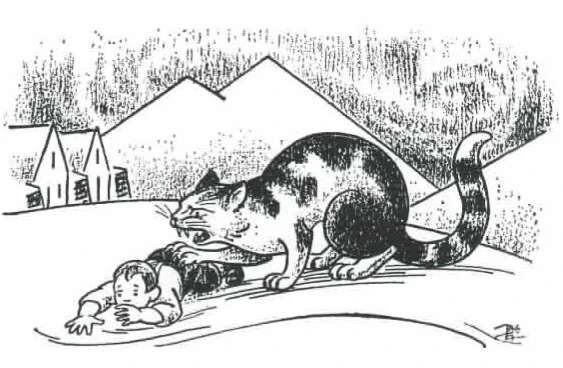Over the years, I've built a lot of superstitions into the coming of a new year. The tree must be taken down, ornaments packed away and the house swept and returned to its natural, messy state before December 31. I allow myself as many sugary treats and wine as I care to consume between December 24 and January 1, but I go back to my usual eating patterns after that. During the week between Christmas and New Year there's a tendency towards idleness, although I prefer to think of it as quiet introspection as I stay tucked inside my warm house. As I sit, sometimes meditating and sometimes just sitting, I plan the ways I would like to start the new year. I gave up on resolutions long ago, but there is one thought which stays with me: "Begin as you mean to leave off." I'm not sure where I first heard this advice. Perhaps I read it or perhaps it was said to me, but wherever it came from, it stuck and since the idea was planted in my head, I've done my best to follow it.
So it was that yesterday found me warping a tapestry loom in preparation for a new weaving. I've done this many, many times - I teach the process, in fact - but with this warp, I managed to make every rookie mistake that could be accomplished. When I plan cartoons, I draw them specifically for tapestry, but this time, I decided to translate a small painting into yarn. I dusted off a loom I haven't used in ages and used a wool warp I haven't worked with before. I didn't expect trouble, but trouble I got. The cartoon was perfect, exactly the way and size I wanted it to be. Too late, I realized that I hadn't allowed for hems (Rookie Error #1). Oh, well - I have woven small pieces without hems before and had always intended to try this on something larger. Apparently, now was the time. Problem solved.
With this loom, the warp is continuous, but it's wound one thread at a time, with each thread sitting side by side, regularly spaced. I don't know what laws of physics were in place yesterday, because it should be difficult to cross warp threads (Rookie Error #2), but cross threads I did. Several, in fact. The fix for that is to unwind to the crossed threads (which are always in the middle of the warp) and rewind the warps. Error #2 corrected.
After two hours of winding on 114 threads, I was ready to tighten the warp and twine across the top and bottom of the warp ends to ensure that each warp is regularly spaced. It was at this point that I discovered Rookie Error #3. This error is the Mother of all Errors and really, should always be considered Error #1, but I didn't notice it until I had taken care of the first two problems. Veteran weavers will laugh now: I didn't check the level of the loom. That's right; despite the fact that there are marks cut into the wood of the adjustable bar at the top of the loom, in spite of the other fact that I own several levels of various sizes, most of which are right beside my weaving table, I failed to notice that the top loom bar was crooked until I had the loom warped. For the non-weavers among you, this is a really, really big deal. It causes tension problems. It distorts your weaving. Your finished piece will not block square. (At this point, Mr. DD came upstairs to find me laughing rather hysterically. When I told him what I'd done, he agreed that this was definitely the Error of All Errors. He did ask why I was laughing, which was a fair question. I could have flung the loom across the kitchen, cursing as I launched it. I took the high road instead. That's my story. I'm sticking to it.) There are two fixes for this problem: either unwind the warp and begin again or release the tension, level the loom and then adjust the tension on each warp end by hand, pulling the loose threads towards the warps on the tighter side and going back and forth until the tension is evenly distributed. I chose the second option, so the next hour was an experience in warp tension adjustment, but I did manage to fix Rookie Error #3.
After that, it was smooth sailing. I began twining with hemp cord across the bottom of the piece. Twining helps to space the warps; I use purple hemp in lieu of a signature on my tapestries. I decided to use two rows top and bottom, to help secure the warp threads which, hemless, would be left without much support and might shift when I cut the piece off the loom. The two rows at the bottom presented no problem; however, when I turned the loom over to twine the top, I discovered - a fricking, fracking crossed warp thread, Rookie Error #4. Worse yet, that warp thread wasn't just crossed with its neighbour. Oh, no. That would be too easy. This meandering warp decided to cross with another 3 threads over. The fix to that? Removing the warp and rewinding everything was an option, but I was beginning to think that, if I pulled off the warp, I'd never rewarp the loom. If that happened, in light of my superstition about beginnings and endings, I might not weave at all in the new year and I wasn't having that. I took the only other option I had, one which I haven't done in decades: I cut the misplaced warp thread and added a new one, tying the old and new together at the back of the loom. (This also means that my plan for using the back warps as my tapestry diary is going to be problematic.)
Last night, I began weaving. Apart from having to push the cloth back in place because there are no hems to support it, things are going well. I can't and don't want to match the colours in the painting to the tapestry. Some of the nuances in the painting, textures which can only be achieved by brush strokes, will be lost (which is why when I paint, I paint and when I weave, I weave), but the weft yarns are providing interesting textures of their own. If the weaving doesn't work, if the whole project falls apart, it will be okay, because I look on everything I do as an experiment, but right now, I think things are looking up.
What this says about how the New Year will start for me, I'm not sure. I've decided to take my mistakes as reminders to stay in Beginner's Mind, that challenges and problems always have solutions and I should plan to expect the unexpected. All those errors could also simply indicate that I'm a bit careless, but, hey, at least I'm weaving.
Namaste.











